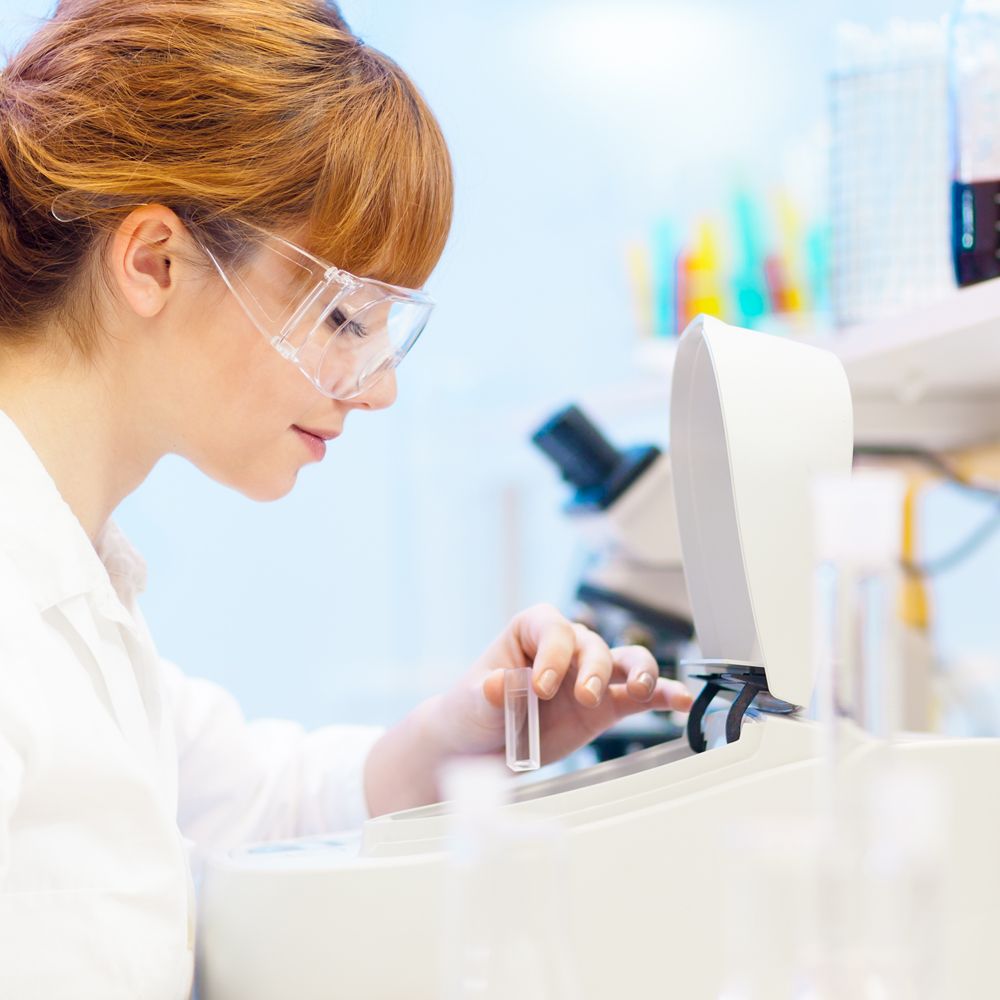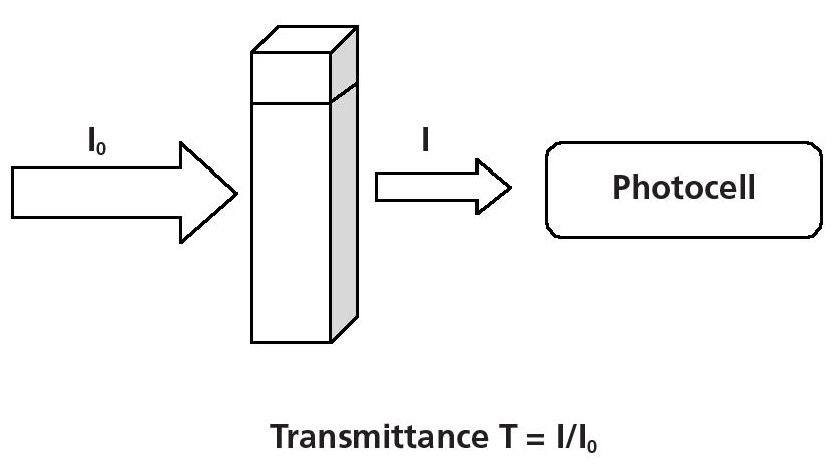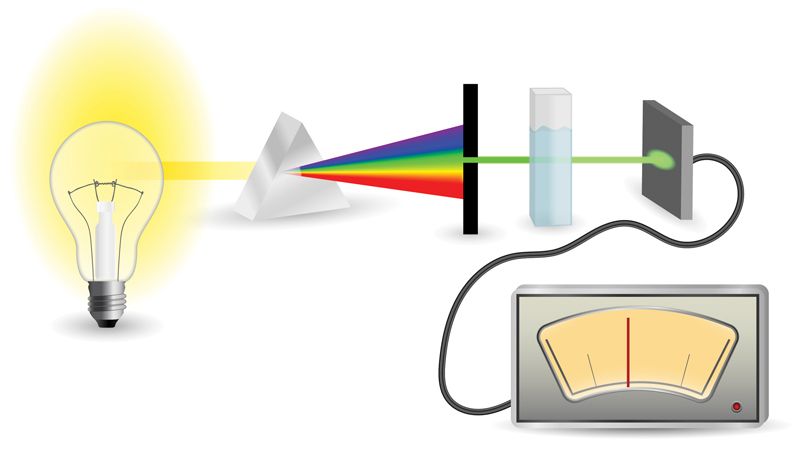My Cart
Your Shopping Cart is currently empty. Use Quick Order or Search to quickly add items to your order!

Matt Bostick
Product Development
May 2018
A spectrophotometer is an analytical instrument used to measure the amount of light absorbed (or transmitted) as it passes through a sample, such as a solution containing food dye. Spectrophotometers work on a few basic principles:
Spectrophotometers used in the classroom have a variable wavelength selector that allows the instrument to transmit light within a narrow range of wavelengths (i.e., 340–950 nm). As mentioned before, different compounds absorb light at different wavelengths. As specific wavelengths of light pass through a sample of dissolved material (referred to as an analyte) within a spectrophotometer, the instrument indirectly measures the amount of light absorbed by that sample by comparing the initial intensity of light reaching the sample (I0) with the light detected by a photocell as it exits the sample (I). The ratio of the 2 readings is referred to as the transmittance of light through the sample (Fig. 1). Often, this value is multiplied by 100 and interpreted as the percent transmittance of light, using this formula:
%T = I/I0 x 100

Figure 1.
The complement of percent transmittance is absorbance (A), the amount of light absorbed by the analyte. It is a logarithmic value with no units. It can be read directly from the instrument in absorbance mode, or it can be calculated from the decimal equivalent of percent transmittance read from the instrument (the values of absorbance and transmittance are inversely proportional). This calculation is:
A = –log T
To better understand what happens within a spectrophotometer, it helps to know the role of each component in the instrument.

While there are several spectrophotometer applications within the chemistry classroom, the instrument can be equally useful to educators in the life sciences. For instance, spectrophotometers may be used to estimate the number of cells suspended in a medium. Consider yeast cells in solution. As all particles in suspension scatter light, yeast cells in solution will also scatter light as they grow, causing the solution to appear cloudy. As the turbidity (cloudiness) of the solution increases, less light will reach the photodetector. Light scattering is measured with the spectrophotometer set to report absorbance. However, it must be noted that different principles are used to measure light scattering and absorbance. Because of this, the amount of light scattered by a solution is referred to as its optical density instead of its absorbance.
Consider the following Carolina products and investigations that utilize spectrophotometry.